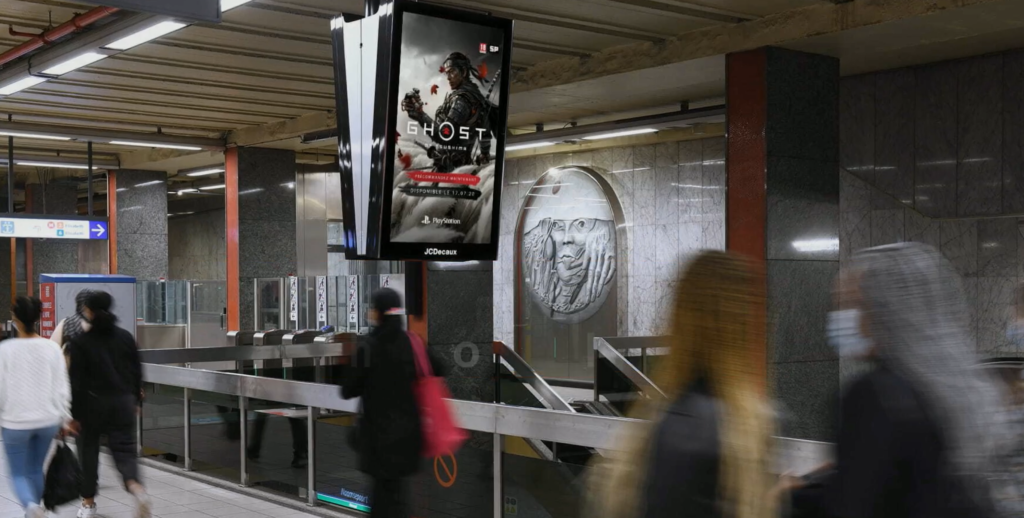Partner Content
NDA has partnered with VIOOH for a series of articles exploring OOH advertising and the role programmatic technologies will play in its development.
Programmatic outdoors is headed for a ‘tipping point’ as it becomes an integral part of omnichannel campaigns at the part of the customer journey where prospects are closest to the point of purchase.
Brands and their agencies are starting to see the huge potential of programmatic outdoor not just in planning campaigns targeting audiences in apt locations. The move to programmatic takes this a step further, meaning the channel can now be factored in as an essential part of omnichannel campaigns.
Brands and their agencies are starting to see the huge potential of programmatic trading and techniques for out of home (OOH) campaigns extend beyond just targeting audiences in certain locations and triggering against specific conditions or events. The ability to plan, activate, measure and optimise programmatic OOH alongside other digital media means the channel can now be factored in as an essential part of omnichannel digital campaigns.
According to VIOOH’s “The State of the Nation 2020” report, this growing realisation is about to hit a tipping point. Within the next 18 months, both globally and in the UK, more than half of digital advertising executives reveal they plan to use programmatic outdoor within omnichannel campaigns.
This surge in adoption can be attributed to nearly nine in ten (89%) of executives revealing they see the channel as a clear part of their programmatic and digital strategy.
“Our research shows that brands are now realising that outdoor no longer has to be planned as a standalone channel, but rather as central part of their digital advertising mix,” said Gavin Wilson, Chief Revenue Officer at Viooh.
“Programmatic allows advertisers to get the full potential from OOH by triggering adverts to the right people at the right time in the right location. Being programmatic, OOH can now be factored into omnichannel campaigns to reach valuable customers throughout every stage of the buying journey, empowering decision makers to put more budget into the channel and optimising adverts which are working best, to drive both effective targeting and budget efficiency.”
From ‘test and learn’ to ‘tried and tested’
This excitement is reflected by Dan Larden, Managing Partner at digital media agency, Infectious Media. As an early adopter of utilising programmatic outdoors within omnichannel campaigns, he has seen a wider groundswell of interest in putting the channel at the heart of omnichannel campaigns.
“We have been running omnichannel campaigns for a few years now, but it’s the shift in budgets away from traditional display and video and into emerging media channels such as OOH, that has been the real change in the last year,” he said.
“As emerging channels digitise, the opportunities for increased transparency and unified targeting and measurement are moving from ‘test and learn’ – to ‘tried and tested’ ways of proving the value of marketing on those channels, which is in turn giving brands more confidence to invest.
“The more successful brands are moving away from siloed plans that split ‘traditional’ and ‘digital’ and then carve up individual channels to specialists. This is giving rise to the ‘omnichannel opportunity’ which is exciting to the more advanced marketers out there who are willing to rip up the old model and embrace data-driven strategies across more of their spend.”
Mobile data boost to outdoor omnichannel
Where this can get even more interesting is by fully utilising the mobile technology used to anonymously locate valuable audiences in the vicinity of screens, according to Jon Block, Chief Product Officer at VIOOH.
“People reveal their location through their mobile phone signal and the apps they use, as well as signing into a location’s wi-fi service,” he says.
“This can be very cleverly added to a service that recognises IP addresses and knows what advertising that recipient has been targeted with on mobile, desktop or through streaming TV and audio. That would be a very useful use of omnichannel activation, to trigger OOH creative that complements what a valuable audience has already seen, activated when the data shows that audience is reachable.”
It is this ability for programmatic outdoor to identify audiences and use triggers to amplify campaigns that has gotten Joel Livesey, Lead Senior Director, Inventory and Partnerships EMEA at The Trade Desk excited. Finally being able to incorporate OOH media alongside other channels is going to help advertisers boost reach and improve efficiency.
“The fact that OOH ads can now be bought programmatically means campaigns can be easily monitored across every channel, all from one buying platform,” he says. “Budgets can be shifted and prioritised based on what’s working and what’s not. Advertisers can finally factor in OOH ads when looking at what drives users to buy products or click on links across a multi-channel campaign. In going programmatic, OOH ads have become a measurable part of the omnichannel approach for the first time.
We are hugely excited for the advancement that programmatic DOOH represents, and the omnichannel campaigns we can now book for our clients. So, whether it’s a Rolex watch advert displayed in the evening outside Kensington’s most expensive restaurants when the right target audience is the vicinity, or a small local bakery advertising to commuters that they have time to pick up a pastry due to train delays, programmatic digital out of home is an investment worth making.”
A holistic approach
This weaving of programmatic outdoor into omnichannel campaigns is best approached by ending the siloed mentality of the past and embracing a holistic approach. The channel is not a single answer to an advertiser’s requirements but rather a very important part of a multi-channel approach.
That is how Akima Davies, Director, Global Solutions and Innovation at Xaxis, summed up outdoor’s advances in the foreword to VIOOH’s “State of the Nation 2020” report. In a crowded and fragmented media landscape, outdoors must not be seen as a one-off solution but rather a channel that can extend reach and work in unison with other media.
“An emphasis on business outcomes and omnichannel strategy can help marketers overcome the challenges of fragmentation,” he said. “Omnichannel techniques which include the strategic coordination of new technologies and messaging opportunities across each component of a campaign can build progress toward a stronger holistic outcome. Programmatic OOH serves a crucial — but not singular or separate — role in this approach.”
The realisation that OOH is best utilised as part of an omnichannel approach to advertising is not new, but the simplicity in planning and activation that programmatic enables means this is no longer confined to the theoretical.
As the “State of the Nation 2020” report shows, programmatic OOH is gaining traction at pace. With nearly nine in ten advertising executives identifying outdoor as a central part to their programmatic plans, the channel is set to become a firm fixture in any forward-thinking advertising executive’s omnichannel strategy.









